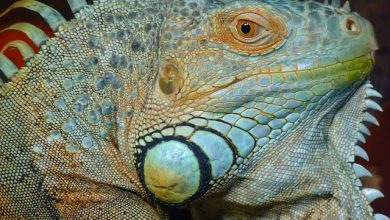How Much UV Light Does Your Reptile Really Need? – The Tye-Dyed Iguana

One of the essentials to taking care of a reptile pet is
making sure it gets adequate lighting. In nature, reptiles follow sleep-wake
cycles that give them exactly what they need from the sun. However, when they
live in captivity (like in a terrarium in your house) they do not get enough
daily sunlight to stay warm and healthy. And thatâs where UV lighting comes in.
But how much UV light does your reptile really need? The short answer is that
it varies by species. Read on to find out the light requirements for the most
popular reptile pets.
UVA & UVB
There are two main types of UV lightâUVA and UVB. Which kind
does your reptile need? For most reptiles, the answer is both. And regular
light bulbs cannot provide either of these. That is why you need special
lighting for your exotic petâs terrarium.
Reptiles are able to see parts of the light spectrum that
humans cannot. They have color receptors in their eyes that pick up ultraviolet
light. Specifically, UVA light allows them to see things normally for a
reptile. That means a bulb that provides UVA is necessary for your reptile to
see food or cage mates properly. Providing enough UVA light at the right times
of day helps your reptile to behave in a manner more natural to its species,
including proper digestion, reproductive cycles, social behavior, and activity
levels.
UVB light is the kind that helps your reptile to produce
vitamin D. As with humans, this is an essential vitamin that your reptile needs
to get from the sun or from full spectrum artificial lighting. Most herps need
calcium powder applied to their food, but without UVB light to help them
manufacture vitamin D, calcium is not well absorbed. Both types of UV light are
needed for your reptile to remain healthy.
What does your exotic
pet need?
The thing to remember is that each reptile has an ideal
range for UV lighting. You need to make sure they are getting enough, but you
donât want to overdo it and get the maximum UV output available. Here are tips
on lighting needs for some of the most popular reptile pets:
- Bearded
dragonârequires two separate light sources, one to provide heat and UVA
light and another to provide UVB light. Bearded dragons require some of the
highest amounts of UVB of all reptile pets. Your beardy will do best with a
mercury vapor bulb like PowerSun
(which can be used both as a basking light and UVB source) or a fluorescent
tube. Compact fluorescents do not give off enough UVB for bearded dragons. - Veiled chameleonâalso
requires separate heat/UVA and UVB lights. Unlike chameleon species that live
on the rainforest floor, the veiled chameleon needs moderately high amounts of
UVB exposure, and compact fluorescents are not sufficient. - Green
iguanaârequires separate bulbs for heat/UVA and UVB. Because green iguanas
are larger reptiles that need big enclosures, you will likely need two UVB
bulbs that cover a large area, such as fluorescent tube bulbs. - Corn
snakesâonly require one light source that provides heat and UVA. Most
snakes do not require separate UVB lighting. - Ball
pythonârequires only heat/UVA lighting.
When selecting an exotic pet, you should always do your
research first to make sure you can properly care for it. A good first step is
to talk to the people at your local exotic pet store. They handle and take care
of various reptile species every day. Ask a staff member at The Tye-Dyed Iguana about lighting and other requirements if you
are considering a reptile pet.



